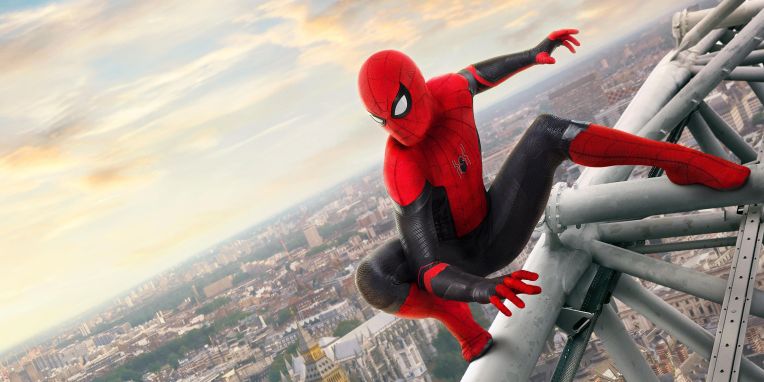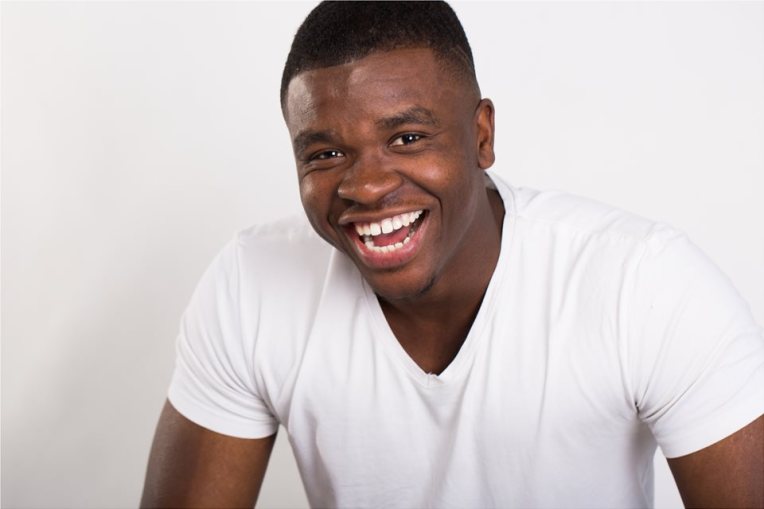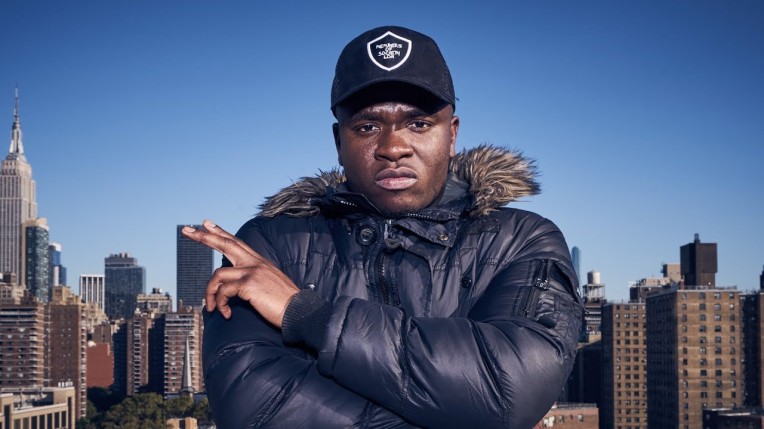Black Superheroes and their Importance in Media
By Omara Olok
Kennesaw State University

Introduction
Within the past couple of years, a rise in black superhero portrayals has become an iconic normality in the entertainment industry, yet has received some backlash from consumers who seemed to not have accepted these characterizations of fantasy, science fiction, and reality. Black icons have always gone through particular struggles in different platforms of media such as music, theatre, film, broadcast news, or television. The media’s acknowledgement has given a one-track perspective of how black characterization should be over the decades, but now with comic book mediums, does this begin impact some viewer’s perception? An example of television shows and films that have highlighted on this are Luke Cage, Static Shock, the upcoming Black Panther, Frozone from the Incredibles, Blade, Storm from X-Men, and Falcon from Captain America: The Winter Soldier/Civil War, respectively, as they have translated from the comic book medium into live-action portrayals. The shows have talked about their stark and bold nature to open the eyes of consumer and give a different effect of superheroes of African origin within media. The purpose serves as a platform of the influence and importance within the superhero phenomenon stretched through eras and pantheons in society around the world, but the still has begged the question: Is the public eye aware of the immoral black portrayals within the comic book medium?
HI: The study hypothesizes how black superheroes have garnered a public response that could be highlighted as positive/negative reactions and what the public’s perception can impact on the younger generations that are growing up with today’s comic book icons.
RQ: How do black superheroes effect the public perception?
Literature Review
The superhero status quo has existed prominently since the 1940s to give inspiration and imagination to future generations, so it should come as no surprise that there would be a hero meant for not only every Caucasian American, but black Americans as well. For the black superhero would represent the ideals and the struggles of what many black Americans had and are currently going through today. It’s one of the top reasons that an elusive number of articles has been produced on this study.
The research came from the precedence of black Hollywood’s rise to prominent status and began seeing a shift in the diverse ingenuity and creativity that is coming out of Hollywood. According to author King (2017), the media has been stated to be one of the world’s most powerful entities through making innocents look guilty and vice versa. The discussion pursues when applied to blacks, the statement rings true and by examining the recent deaths of Trayvon Martin, Michael Brown, and Eric Garner, the incidents sparked up conversations of race relations in America and the role and responsibility in media. This sentiment carries into the legal system on how they have treated blacks in the public perception of these young men (King, 2017). The idea of racial contract, contributed by Charles Mills, comes into play, where examination of racial dimensions of civil democratic societies where the whites control the morality, policy, and dynamics of their supremacy. This contract streams as nonconsensual of an agreement for non-whites since the racial contract believes that they are “simple objects” (King, 2017). In order for this contract to work, rules are set in motion for different situations and principles. King (2017) elaborates how this apparatus is a tool to organize principle categorizing and collecting various institutional, physical or administrative mechanics and knowledge structured around exercising power and oppression over racial bodies. Ultimately, the media’s role to enlighten on cultural representation of people, particularly Blacks, shows the alignment of social constructed daily attitude of race (King, 2017). Scholars Derek Bell and William Crenshaw (1992, 2011) employed methods to study, challenge, and influence a change on legal systems becoming neutral and more color blind. CRT scholars use five key principles to assist individuals in the nuances of race v. racism: centrality of race and racism, dominant discourse challenge, social justice commitment, centrality of experiential knowledge, and transdisciplinary perspective (King, 2017).
One object about superheroes is they repeaters and recyclers, in regards to their audiences for both inhabiting their stories and those whom are audiences to the stories. This brings to the table a recently popularized hero and film, Django: Unchained. Coetzee (2016) disseminates on director Quentin Tarantino’s right to tell a “black story” by using Wall Street Journalist Ishmael Reed’s point of view. Calling it a discomforting description, Coetzee elaborates that Reed’s “alienated and critical response” of the film came from his personal understanding to “Who should tell the black story?”. Coetzee notes Reed’s resistance on the rights tell black stories on different layers and that represent black-centered responses to the film. However, the audience must be “unchained” as to react in ways exceeding the narrow minded responses Hollywood attempts to produce (Coetzee, 2016). While works from author Manthia Diawara touch on “blacks’ representation in Hollywood omitted…spectators will renounce results and refuse to forget their disbelief”, the typical “black spectators” should not be guaranteed nor limited to one’s ability to take a stand on the position (Coetzee, 2016). Django is considered actively as an Afro-superhero for black audiences despite Tarantino to keep an open mind. Being the superhero trope specifics of reinventing, reinterpreting, and tuning to political context, African pop culture has stood out for the high political profiling of its superheroes. As the audience’s demands and needs change on a whim and the historical definition of a superhero shift are reimagined, most consumers have regards and their own responses and hesitation on what a superhero is. In truth, Django may not appear a superhero to Tarantino, yet it does not mean anything except to the public what a superhero is (Coetzee, 2016).
Results/Discussion
In more ways than one, black superheroes have reached audiences in ways people never expected them to: coolness. The first study shows author Nama (2012) discussing America’s transformation in the rise of racial justice from the 1960s and early 1970s when a character named Tyroc was introduced. With civil rights and black power movements at play in reality, Tyroc was a significance as his ability to alter reality with his voice and various screams were the thin line between how vocal black activists and organizations pushed to make America accepting (Nama, 2012). Early indications represented the new wave through social trends, culture themes, and political outright that stemmed from civil rights and Black power movements. Nama (2012) quotes a true shift that was significant as black representation in the film industry through Blaxploitation cinema and, as time passed, many of the black superheroes had rooted from this commonality.
Instead of B-rated superhero films and television adaptations, the plentiful black characters from comics began to leak onto various shows and films as supervillains. Although 1960s network television allowed interpretations outside of the superhero genre, it wasn’t until actress Eartha Kitt’s portrayal of DC comics Catwoman stood as a testament to cultural viewing of superheroes and their over layered enjoyment from power (Nama, 2012). The performance was becoming so grandiose, it set a template for future portrayals of the cat burglar and how subsequent her tempting nature could attract viewers. Without this performance, Halle Berry’s nine lives interpretation would never see major motion picture viewing (Nama, 2012).
Nama’s (2012) analogy on the black superhero standard rings through where she points to Christian Davenport’s article stating if a black superhero is too black, then they become irrelevant to whites, but if they aren’t black enough, they cannot validate the rationale for “black” superheroes to begin with.
Nama (2012) discussed further how the popularity and significance of comic book character, Spawn, a former CIA agent murdered by his own government and is a black character had less to do with his race and focused more on the artwork and goth pulp fiction of Todd McFarlane’s noir narrative. In this case, the significant key was timing for the character’s success with Spawn being ahead of its time and being visually cool, strange, yet cutting edge that mass audiences garnered the status to critical acclaim (Nama, 2012). However, aside from the racial image of a black man portrayed as a demon, the character’s symbolism of discovering “true” identity, struggling contradictions, love for his wife, and ethereal powers from heaven and hell to help save humanity give him a niche other superheroes never compared to (Nama, 2012).
In the second study, it can be noted that even through media’s prominence in providing inspiration, morals, and do right attitudes in the superhero medium, there are still audiences who have yet to grow into black superheroes on the big screen today. Hoeberek (2016) provides some discussion to how superheroes are have had to adjust to social modernism. Since comics began appearing during successful wave of attacks on the welfare state, the ideals of superheroes working for the public have changed the perspective of audiences and its creators. Although it embraced social norms of reality, comics have become lost and a new wave of cynical superhero stories came to light, but found ways to inspire people to work towards the greater good (Hoeberek, 2016).
The third study discusses Nama’s (2009) perspective on how the black superheroes have a lack of recognition as science fiction objection is not surprising due to black comic book images categorized into racial caricature and has less analyzation of the ignorant history of black representation in comic books. Nama (2009) admits in the discussion black superhero presence in a dominate white comic book universe of DC and Marvel had strengthened from the sociopolitical and racial times of the 1960s and 1970s, but underneath these layers of dark figures was not only race introduced, but a reimagining of black people soaring as science fiction spectacles of advancement and scientific metamorphosis. Culturally, black superheroes are not mere side show products, but have signifiers that touch on racial subjectivity, bring attention to racial equality and diversity, and holds considerable commentary of racial politics in not just America, but the world (Nama, 2009).
The fourth study comes from Sparks (2014) and Singer (2002) where the cultivation theory is the prime example of how consumers/audiences do not mention outwardly racial discrimination, profiling, or other biased and prejudice statements. Sparks (2014) alludes to cultivation theory, proposed by George Gerbner, the likelihood that the more people have consumed media then the more likely they are to be influenced by its messages from television. Thus, bringing to forefront some degree of stereotyping that occurs within media. Singer (2002) explains that critics have associated comics with perpetual racial stereotyping and quoting Frederic Wertham’s argument on comics “exposing children’s minds to endless stream of prejudice-producing images” where white superheroes are heroic and handsome whereas ethnic characters are subpar and suffer from inferiority. Believing race in comics needs a less overzealous approach, Singer (2002) notes by setting aside claims and opinions of stereotypes governing readers’ psyche should still hold comics accountable for ideological assumptions.
Conclusion
The theory stands on the perception of black superheroes remains true and people do not judge today’s characterization’s as strongly as they did in the past. Critics have made their primary focus to askew from the general prejudices, but there are still some researchers who believe the impact on the audience, has weighed heavy on black people and the stereotypes they portray from DJ to hoodlum. As the research has stated what type of men and women the media portrays, the ideologies are still a reaction and albeit showcase personal beliefs over the person. Furthermore, if the research’s biased testament, proves from exposure and influence what a person of color within a medium goes through and the media’s effects that blend into the medium’s storytelling. Finally, black superheroes are an inspiration to children of all races and paved a way for audiences’ awareness and beliefs as more iterations of the black superheroes come to the big screen.
References
Boyd, R. L. (2015). The ‘black metropolis’ in the American urban system of the early twentieth century: Harlem, Bronzeville, and beyond. International Journal of Urban and Regional Research, 39(1), 129–144. doi:10.1111/1468-2427.12048
Gateward, F. K., & Jennings, J. (2015). The blacker the ink: constructions of black identity in comics and sequential art. [N.p.]: Rutgers University Press.
Coetzee, C. (2016). Django Unchained: A Black-Centered Superhero and Unchained Audiences. Black Camera: An International Film Journal, 7(2), 62-72. doi:10.2979/blackcamera.7.2.62
Hoberek, A. (2016). ‘But–what can anyone do about it?’: modernism, superheroes, and the unfinished business of the common good. Journal of Modern Literature, (2), 115. doi:10.2979/jmodelite.39.2.09
King, L. (2017, February 1). The media and black masculinity: Looking at the media through race[d] Lenses. Retrieved April 27, 2017, from http://ices.library.ubc.ca/index.php/criticaled/article/view/186224/185407
Nama, A. (2012). Super black: American pop culture and black superheroes. Choice, 49(9), 1630. Retrieved from doi:10.1080/01419870.2012.688994
Nama, A. (2009). Brave black worlds: Black superheroes as science fiction ciphers. African Identities, 7(2), 133–144. doi:10.1080/14725840902808736
Ryan, M., & Thon, J. (Eds.). (2014). Frontiers of narrative: Storyworlds across media: toward a media-conscious narratology. Lincoln, US: University of Nebraska Press. Retrieved from http://www.ebrary.com
Singer, M. (2002). “Black Skins” and White Masks: Comic books and the secret of race. African American Review, 36(1), 107. Retrieved from http://go.galegroup.com.proxy.kennesaw.edu/ps/i.do?p=LitRC&sw=w&u=kennesaw_main&v=2.1&it=r&id=GALE%7CA85185720&asid=c4126e5bf1b06f68592f717827b03bed
Sparks, G. G. (2014). Media effects research: a basic overview (5th ed.). Boston, MA: Wadsworth, Cengage Learning.













